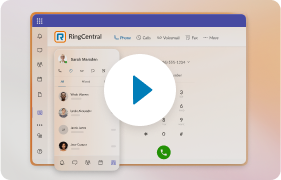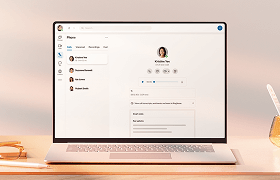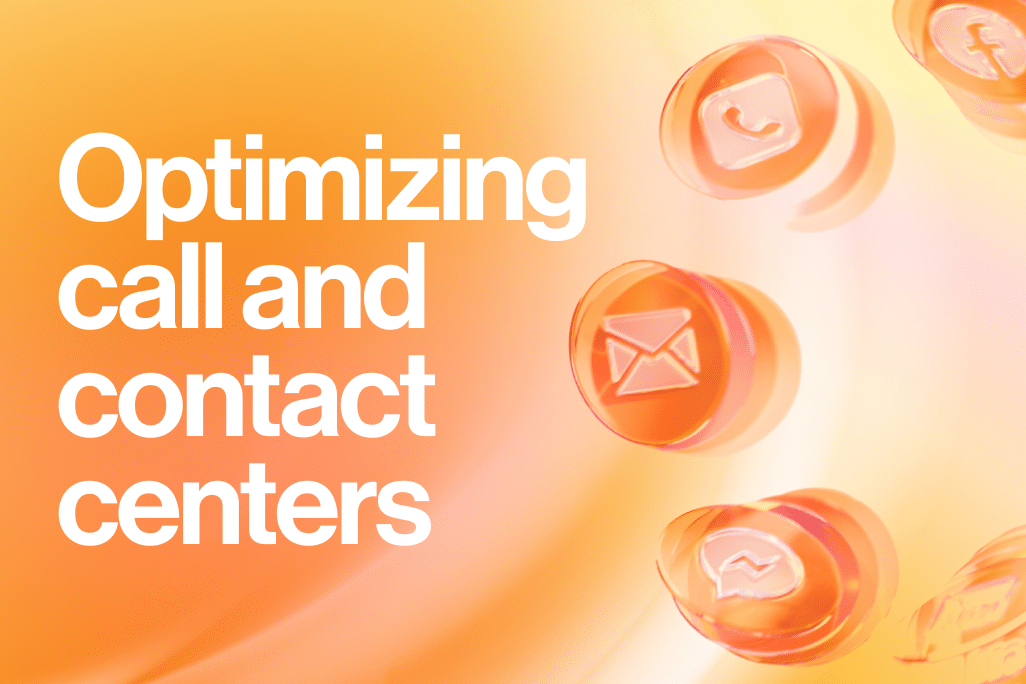Whether you’re a large retail company, a small service provider, or a nimble but fast-growing tech startup, one thing is for sure—there are a myriad of benefits you can gain from looking into your customers’ data.
Voice of the customer (VoC) data provides insights that help improve customer service and business growth.
However, collecting this type of data in the age of digital privacy and ever-evolving security concerns isn’t always as straightforward as you might think.
In this extensive guide, we’ll look at some excellent ways to collect voice of the customer data without breaching your customer’s privacy—let’s jump in.
Voice of the customer: Definition?
When discussing voice of the customer, it refers to specific data that companies can use to gain a more thorough and accurate understanding of their customers.
Through this type of data, business owners get to unveil important insights, such as:
- Pain points, hurdles, and other customer struggles
- Typical purchase behaviors and patterns
- Choices, interests, and preferences
- Needs and expectations
Armed with this information, businesses can then work on enhancing the customer experience, supporting customer service teams, helping product teams build better offerings, and more. Many organizations now use customer data platforms to centralize and manage this information efficiently, ensuring every insight is accurate, actionable, and privacy-compliant.
Laying the foundation: Building a voice of the customer program
Collecting voice of the customer data effectively—and ethically—requires putting in place a successful VoC program. Below are the top five steps to take when laying this crucial foundation.
1. Clarify your vision
Define your goals: optimize productivity, reduce contact center agents‘ response times, or deliver personalized marketing messages.
Whichever goal you have, make sure you clarify it with the rest of your team, as this will enable you to shape your voice of the customer program much more efficiently and successfully.
2. Identify a strong leader
A voice of the customer program needs a program leader. So, before you start collecting and analyzing customer data, make sure that you’ve selected the best person to guide, motivate,
and support your team throughout the whole process.
3. Promote collaboration and engagement
Typically, the team dedicated to collecting, analyzing, and making sense of your voice of the customer data will be composed of people from different departments. You might have sales reps, someone from marketing, someone from your contact center, and, likely, someone from product development and senior leadership, too.
With so many different perspectives, core messages can easily get lost. Ensure that you create an atmosphere in which everybody can voice their ideas, share knowledge, and help move the project forward.
4. Ensure full alignment
Another important factor to consider for long-term success, precisely because you’re likely to have a team made of people from different areas of the company, is to ensure that everyone is fully aligned.
You’ll need the team to work toward the same vision, so be sure to share everything with them right at the beginning of the project—from its goals to its scope, all the way to defining who’s responsible for what.
5. Keep reviewing, assessing, and improving
As with every project, your B2C or B2B data enrichment program might need to change over time, adjusting to your customers’ ever-evolving needs and expectations and any new regulations regarding data collection and protection.
So, keep checking on your program, make sure it’s working as it should, and don’t be afraid to tweak it to better meet your objectives.
Top 3 channels for voice of the customer data
Multiple methods exist for collecting VoC data. Here are some of the most effective:.
1. Customer interviews and surveys
Few things are as powerful when it comes to gathering customer feedback as a well-thought-out customer survey or interview.
With surveys, you can be as thorough, detailed, and specific as you like, which enables you to glean invaluable insights into everything from common pain points to things your customers love about your brands and products.
For example, consider sending a customer feedback survey after a customer’s first purchase to find out how the whole process was for them.
Similarly, customer surveys can provide interesting insights into the quality of your customer support, which can inform future strategies to enhance the overall customer journey.
Use as many question types as you like—from simple ratings to multi-choice questions and completely open-ended questions.
2. Customer reviews
Another excellent way to get fresh, accurate, and unfiltered voice of the customer data is through customer reviews.
Many brands opt for specifically asking customers for a review when they’ve purchased something, but customers also often take to the web to voice their opinions on a brand and its offering without being encouraged to do so.
Either way, be sure to check popular review sites, such as Google, Yelp, and TrustPilot, and look for any patterns in the online reviews.
For example, several people could be complaining about the same issue with one of your products, or they may be particularly unsatisfied with how long it takes to return or exchange an item.
All these insights uncover opportunities for improvement that can later be used as a way to steer your future business decisions so you always have happy and satisfied customers.
3. Social media platforms
When discussing voice of the customer data, never underestimate the huge—and ever-increasing—power of social media.
Specifically, we’re referring to the practice of social listening. This identifies the process of monitoring what people say about your industry, brand, and offering pretty much in real time across different social media platforms.
So, whether you’re active on LinkedIn, Facebook, Instagram, TikTok, YouTube, or all of them, consider designing and implementing a thorough social listening plan that can enable you to stay on top of any conversation regarding you. This will help you spot potential problems and be proactive in the case of a full-blown crisis.
Voice of the customer: How to ethically and safely collect this data in 5 steps
With data privacy and security playing an increasingly crucial role in the relationship between customers and brands, it’s vital that you always collect your voice of the customer data in the safest, most ethical, and most responsible way. Here are five ways to achieve that:
1. Promote transparency and build trust
Being open, honest, and transparent with your customers is paramount if you want to build a relationship of trust, loyalty, and long-term profitability. So, be as simple and straightforward as you can when collecting your voice of the customer data.
Avoid unnecessary and complicated jargon and ensure that all information related to data collection, usage, and storage is well signposted and easy to read and understand.
Whenever you change the way you collect, use, or store your data, be sure to inform your customers immediately, preferably via email, and provide them with the option to opt out should they be unhappy with your new processes.
2. Ask for customers’ consent
Collecting data without explicitly asking for people’s consent is no longer possible. That applies to everything from call recording to collecting details for a loyalty card. In today’s digital-savvy and privacy-first age, customers are more preoccupied than ever with how their personal and confidential information is being used, by whom, and for how long.
So, before you gather voice of the customer data through the channels we outlined above, or many others, remember to always request informed consent. This, however, goes way beyond adding a checkbox to your data collection message. Consider including a more detailed and comprehensive section that accurately explains to customers exactly what they’re agreeing to as well as which data will be collected, why, by whom, and how long it will be stored.
Remember to offer your customers the possibility to opt out at any time and without the need to provide a specific notice or reason.
3. Only collect the data you need
Customer data is a goldmine of opportunities for businesses, as it forms the basis for personalization, engagement, and relationships.
Nonetheless, don’t be tricked into thinking that this means you should collect enormous amounts of data.
Instead, embrace data minimization—the process of collecting only the data that you need for a specific reason.
Not only is this one of the most effective best practices in data collection, as it enables you to really zoom in on the information you want to uncover from your customer base, but it’s also a compulsory requirement of specific laws, such as GDPR or unified compliance framework. (Read this if you’re wondering, “What is unified compliance framework?”.)
4. Consider anonymizing and aggregating data
It might be obvious, but not all companies immediately consider this when looking for ways to collect customer data without infringing on privacy—data anonymization and data aggregation.
Anonymizing data means eliminating all information that can be connected to a specific individual, whereas aggregating data involves collecting data from a wide range of users and looking at trends rather than particular individual details.
While these two approaches might not yield the kind of granular, highly specific insight that non-anonymized data usually does, they can still be valuable to companies looking for patterns of behavior in particular customer segments, demographics, or locations.
These two methods of data collection avoid compromising people’s privacy.
5. Always keep customer data safe
Following our previous four tips to collect and store your customers’ data while protecting their privacy isn’t enough if you don’t implement a way to keep that data safe at all times.
Data security is inextricably linked to data privacy, so you’ll need to implement strong security measures alongside the privacy-related ones that we’ve discussed so far.
Think about the potentially disastrous scenario that you might find yourself in if you become a victim of a data breach that exposes confidential and sensitive customer information.
Not only will you likely lose your customers’ trust—and their business—but you might also be liable to legal penalties, such as fines and other types of charges.
Make sure that your servers are secure, your software tools always run the latest security patches, and your ERP integration is protected. Also, ensure that you use data encryption for all your communications.
Voice of the customer data: Key takeaways
Businesses that know their customers like the back of their hand are in a much better place to meet customer expectations, drive customer satisfaction, and boost their customer retention rate compared to those that shoot in the dark hoping to find someone who might be interested in their offering.
Because data is, ultimately, what enables companies to better understand their customers, collecting voice of the customer data is key to success.
As we’ve seen in this comprehensive guide, though, collecting, storing, and accessing customer data must be done in a way that’s ethical and respectful of customers’ privacy, as well as fully compliant with data privacy and security laws.
By following our tips, you’ll be able to make the most of the data you gather while safeguarding it and ensuring it never infringes on your customers’ privacy.
FAQs
What is voice of the customer data?
Voice of the customer data refers to all the information that businesses collect about their customers. By collecting this kind of data, companies can make better business decisions, deliver stellar customer service, and drive greater personalization.
Is it possible to collect voice of the customer data without infringing privacy?
Not only is it possible to do so, but it’s also a requirement in many countries around the world. Five ways to collect this data without compromising privacy include being transparent with customers, asking for customer consent, minimizing data collection, using anonymized and aggregated data, and harnessing technology to safeguard data.
How can RingCentral help?
Using our best-in-class cloud technology, companies can safely collect, store, and access voice of the customer data, enabling them to meet stringent laws around data privacy and security.
Updated Oct 29, 2025












